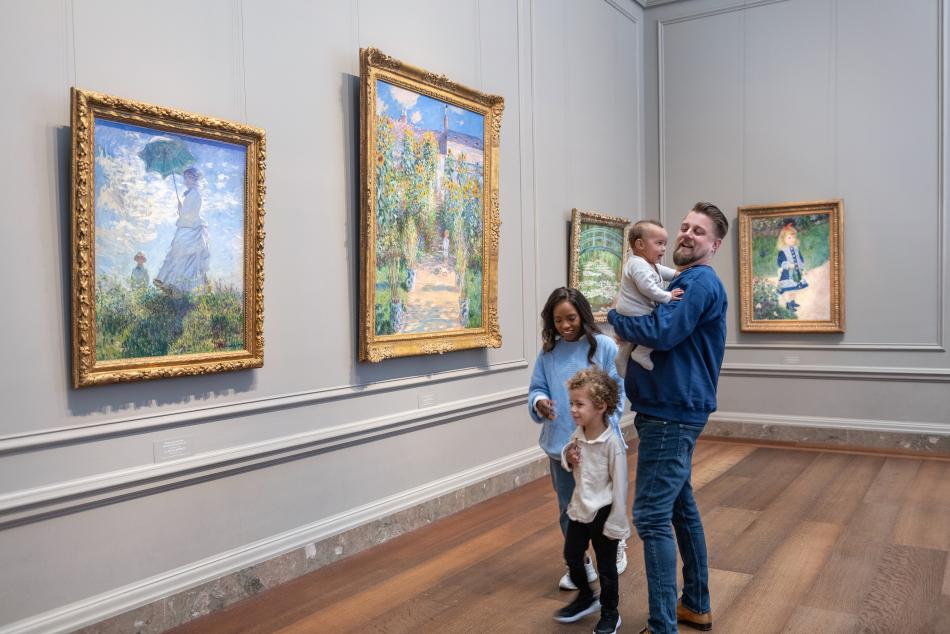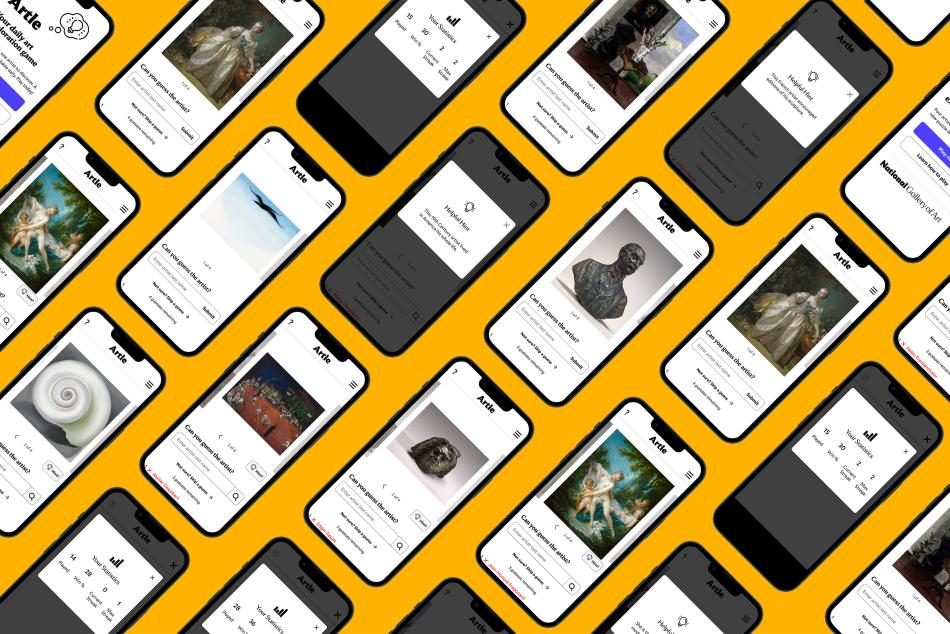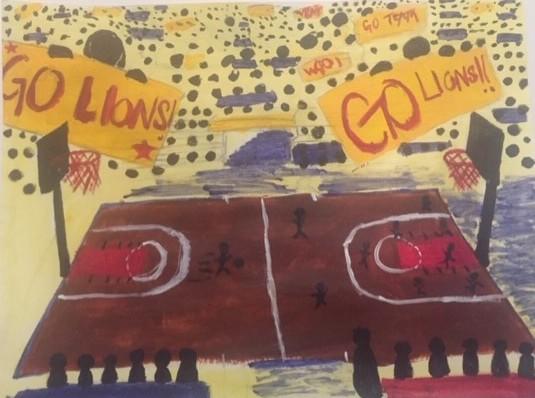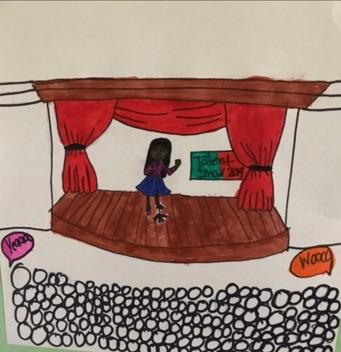Jacob Lawrence was a painter, storyteller, and teacher. He wanted to tell stories about the lives of African Americans. He did this by painting pictures of the people and places he saw every day. He also painted series of famous people and scenes from history. Lawrence lived in New York City for many years, but he also traveled to the country of Nigeria to learn more about its art and culture.

Language
Look
How many different colors do you see? Name them.
What kinds of shapes do you see? Does that shape repeat somewhere else in the painting?
What are the people doing? Make a list of their activities.
What do you see off in the distance, in the background of the painting?
What one word would you use to describe the overall mood or feeling of this painting?
Imagine you are walking through this scene. What sounds would you hear? What might you smell or taste? What could you feel with your fingertips?
How would this artwork look different if it were the end of the day?
What would you want to ask the artist about this work?
Read
Maybe Something Beautiful: How Art Transformed a Neighborhood (Spanish language version: Quizás algo hermoso: Cómo el arte transformó un barrio)
by F. Isabel Campoy, Theresa Howell, and Rafael López
Mira loves to make art and share it with her neighbors. One day she and her neighbors work together to make art for the whole neighborhood.
Jake Makes a World: Jacob Lawrence, A Young Artist in Harlem
by Sharifa Rhodes-Pitts and Christopher Myers
Young Jake tells the story of his neighborhood in Harlem and how his community inspires his art.
Make: Paint a gathering place
You Will Need
- Pencil
- Paints
- Paintbrushes
- Heavyweight paper
Think of a place where people gather—a park, school assembly, church, game, or concert. What different things do people do there? What is the overall feeling you get from being there?
Draw the scene in pencil, using simple shapes and outlines. First, draw the people and objects at the bottom of the page. Then fill in the space around them, repeating some of the same shapes. Will you include yourself as part of this scene?
Like Jacob Lawrence, choose only four colors (plus black and white) to paint the scene. Using one color at a time, fill in each shape.
Vocab Bank
- background
- culture
- distance
- scene
- series
Download
Art Tales: Coloring and Cut-Outs booklet (PDF, 3.5 MB)
Art Tales for Pre-K (PDF, 7.2 MB)
Primeros Pasos En El Arte (PDF, 7.5 MB)
Primeros Pasos En El Arte: Colorear y Recortes (PDF, 3.7 MB)
An Eye for Art: Jacob Lawrence teaching resource (PDF, 9.4 MB)
Visit
Register for the Art Tales pre-K school tour
Submit Student Work
Send images of your students' projects that follow these activities - email [email protected]
You may also like

Educational Resource: Art Starters: Raphael
A lesson for preschool to kindergarten students about artist Raphael’s painting Saint George and the Dragon. Students learn how to look at this painting, what you can read to learn more, how to create a “courage” mask, and a list of vocabulary terms related to this activity.

Educational Resource: Art Tales: Alma Thomas
A lesson for preschool to kindergarten students about artist Alma Thomas’ painting Pansies in Washington. Students learn how to look at this painting, what you can read to learn more, how to create a color square, and a list of vocabulary terms related to this activity.

Educational Resource: Art Starters: Diego Rivera
A lesson for preschool to kindergarten students about artist Diego Rivera’s painting No. 9, Nature Morte Espagnole. Students learn how to look at this painting, what you can read to learn more, how to make a still life collage, and a list of vocabulary terms related to this activity.




